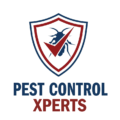Entry-Point Checks, Sealing Tips, and Why Infestations Can Quickly Spiral By Pest Control Xperts
Green, nestled between Akron and Canton, showcases scenic spots like Ariss Park and the Portage Lakes area, drawing both residents and visitors. Nearby communities such as Greentown, Middlebranch, Uniontown, Hartville, and Canal Fulton share a similar suburban appeal, where Ohio’s changing seasons and accessible green spaces can, unfortunately, invite rats and mice. Below, we explore common rodent entry methods, how to seal them off, and why ignoring a minor rodent problem in Green can escalate quickly.
1. Why Rodents Thrive in Green, Greentown, Middlebranch, Uniontown, Hartville, and Canal Fulton
- Ohio’s Seasonal Climate
- Cold winters often drive rats and mice indoors seeking warmth.
- Milder seasons deliver abundant outdoor sustenance, prompting faster breeding if rodents remain unchecked.
- Green Spaces and Water Sources
- Areas near Portage Lakes, the Tuscarawas River in Canal Fulton, or farmland around Hartville offer moisture and cover for rodents.
- Overgrown yards, unsealed trash bins, or pet food outdoors can further tempt scavenging pests.
- Ongoing Residential and Commercial Growth
- Expanding neighborhoods or older buildings with minor gaps can provide rodents easy entry if not sealed.
- More eateries and commercial sites mean extra waste, supplying simple meals for rats and mice.
2. Entry-Point Checks: How Rats and Mice Slip Indoors
Rodents only need an opening the size of a dime to infiltrate a property. Conducting routine inspections prevents small issues from ballooning into infestations.
- Foundations and Exterior Walls
- Check for cracks, holes, or deteriorating siding near the base of your home.
- Pay special attention to where pipes or cables enter—often-overlooked entry points.
- Doors and Windows
- Repair or replace worn sweeps or weather stripping that leave tiny gaps at thresholds.
- Ensure window screens fit tightly, free of rips or loose edges.
- Roofs, Soffits, and Attics
- Damaged shingles, warped vents, or compromised soffits let rodents climb inside.
- Look for chew marks, droppings, or shredded insulation in attic corners, indicating nesting.
- Garages and Storage Areas
- A slight gap beneath a garage door frequently goes unnoticed but admits mice or rats.
- Cluttered sheds with open cardboard boxes can provide secluded nesting spots.
3. Sealing Tips to Keep Rodents Out
Once you identify potential access points, sealing them quickly is essential to deter rats and mice from settling inside your home.
- Durable Materials
- Use steel wool or wire mesh to fill smaller holes, then seal with caulk or foam.
- Larger openings benefit from hardware cloth or metal flashing to withstand chewing.
- Door Sweep Improvements
- Even a narrow gap under exterior doors can be a rodent gateway.
- Make sure garage door edges meet the ground firmly without letting in daylight.
- Trim Vegetation
- Overgrown shrubs, vines, or tree limbs touching walls or roofs can act as “bridges” for rodents.
- Remove leaf piles and yard debris near foundations to reduce potential nesting areas.
- Secure Trash and Food Sources
- Store garbage in bins with tight-fitting lids, preferably away from main entrances.
- Avoid leaving pet food outside overnight, attracting nocturnal scavengers.
4. Why Rodent Infestations Can Quickly Spiral
- Rapid Breeding
- A single pair of rats or mice can birth multiple litters in a year, quickly increasing their numbers.
- Postponing action when only a few are spotted can lead to colonies growing unnoticed.
- Continuous Gnawing
- Rodents chew on wood, wiring, and insulation, causing structural or electrical hazards.
- Each new hole created expands entry points for additional pests.
- Health Concerns
- Droppings, urine, and nesting materials contaminate surfaces, affecting indoor air quality.
- Fleas or mites introduced by rats and mice may complicate the infestation further.
- Concealed Nesting Sites
- Wall voids, crawl spaces, or attics shelter rodents out of sight.
- Many homeowners only detect a problem once populations have significantly multiplied.
5. Pest Control Xperts in Green
Pest Control Xperts focuses on sealing techniques and practical advice to prevent rodent problems in Green, as well as surrounding areas like Greentown, Middlebranch, Uniontown, Hartville, and Canal Fulton. By pinpointing vulnerable spots, recommending tough sealing solutions, and guiding year-round maintenance, our methods help stop rats and mice before they flourish.
Routine Prevention Strategies
- Monthly Exterior Checks: Inspect foundational walls, doors, and roof edges for emerging cracks or chewing marks.
- Clutter Control: Store items in sealed plastic bins rather than open cardboard boxes, limiting nesting material.
- Immediate Repairs: Fix leaky pipes, broken screens, or worn roof components promptly to keep rodents out.
Conclusion
From the scenic farmland around Hartville to the suburban streets of Green, the shifting Ohio climate and available food sources can draw rats and mice searching for refuge. Sealing entry points, trimming vegetation, and promptly responding to early signs of rodent activity helps keep minor issues from escalating into major infestations. With Pest Control Xperts by your side, you’ll be well-prepared to maintain a rodent-free home and fully enjoy the convenience and community spirit that define Green, Ohio.

